Project Treatment - Casino Fever
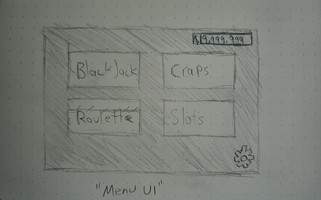
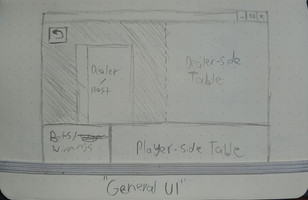
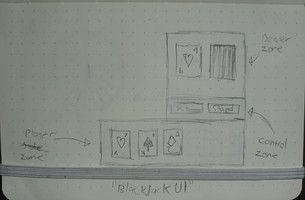
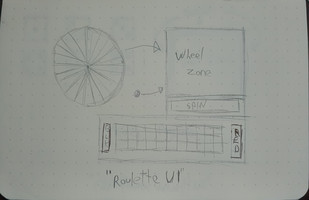
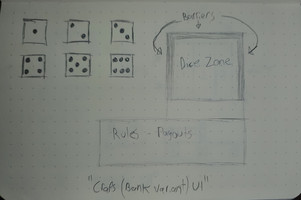
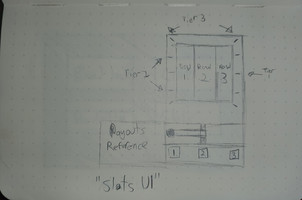
Working Title: Casino Fever
Genre: Casual – Given the nature of the game, being made up of a series of minigames based on popular casino games, It makes the most sense to file this game under ‘Casual’.
Concept Statement
All of the rush, with none of the financial hardship! Dive in to four classic casino games, be it Blackjack, Craps, Slots or Roulette; and rake in the mega bucks!
Concept Creation Process
The core idea creating a 'compilation' type game has been one that's been in my head for quite a while, especially being an avid fan of the WarioWare series of games. The idea of theming around a casino, however, came from a combination of spending time at the Crown Casino in Melbourne over the winter break, as well as re-watching old streams of internet gambling, back from before Twitch banned the practice in late 2021. In regards to the former, I also saw the opportunity to create something that could potentially be used to treat gambling addiction, as having something themed around a casino could be used to "scratch the itch" in a manner that doesn't prove any danger to causing the significant financial damage that gambling often causes.
Audience
The core audience for this game is adults of any gender, with an age range from early 20s onward. In addition, it’s important to consider that since the game will be available on itch.io, it will be possible for kids to have access to the game as well.
As mentioned in the Concept Creation Process section, a secondary audience could also be anyone who is suffering from any kind of gambling addiction disorder, due to, as mentioned above, the ability to use the game as a non-destructive outlet.
Competitive Analysis
While a combined casino experience game is fairly uncommon, individualy the games are far more common. For example, on the Google Play Store's "Top Grossing" game chart, five of the top ten apps are slot machine games.
GAME TREATMENT
Main Menu
Upon loading into the game, the player is presented with options for four different games (five, if time allows). A counter for the player's winnings is present in the top-right corner, as well as a settings menu in the bottom-right corner of the display. Inside the settings menu are the options to change music and sound effect volumes, as well as the option to reset the player's winnings to the default value.
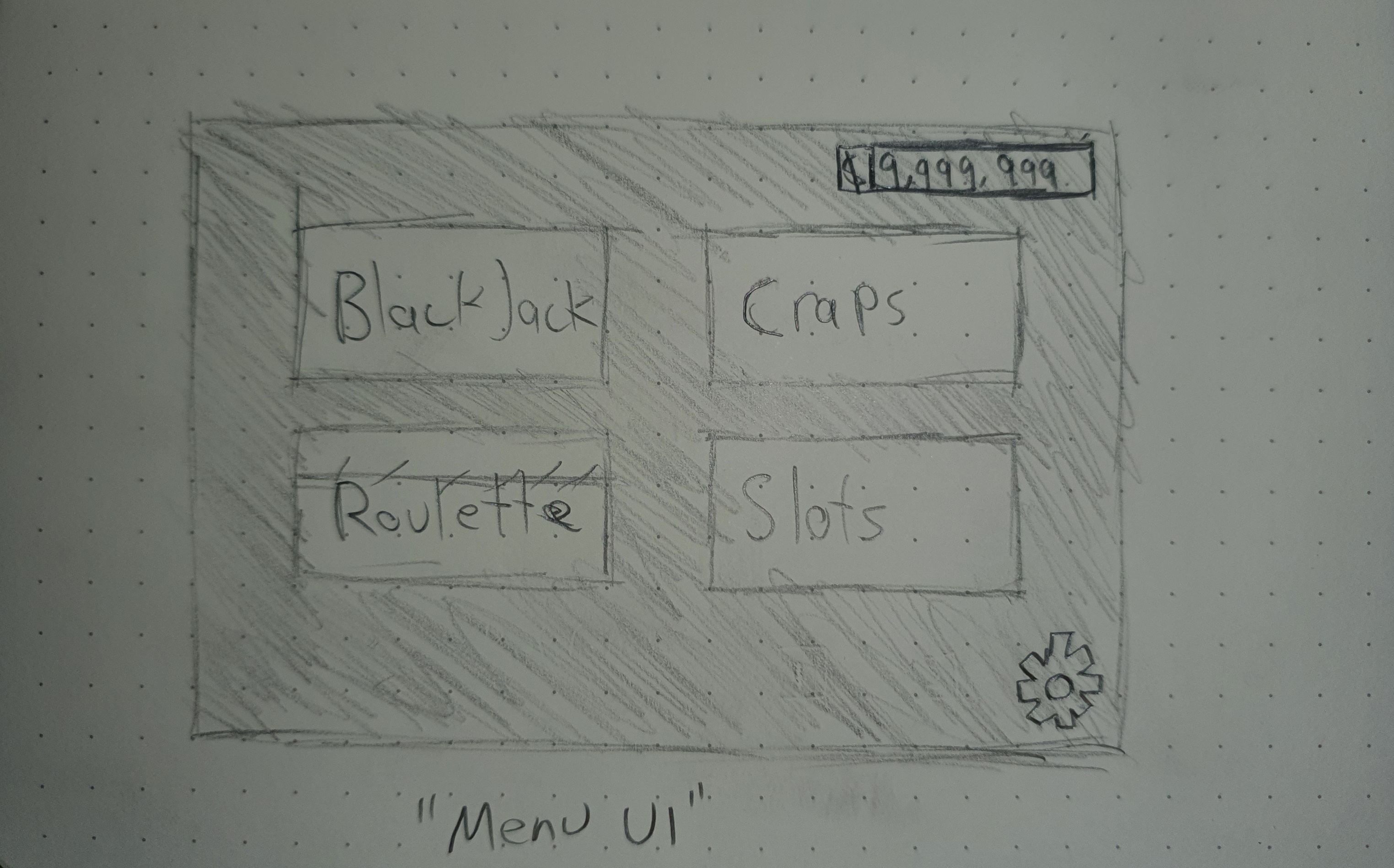
(Fig. 1 - "Main Menu UI")
Upon selecting a game, the background layer is loaded in, followed by the default foreground layer, and finally the game itself.
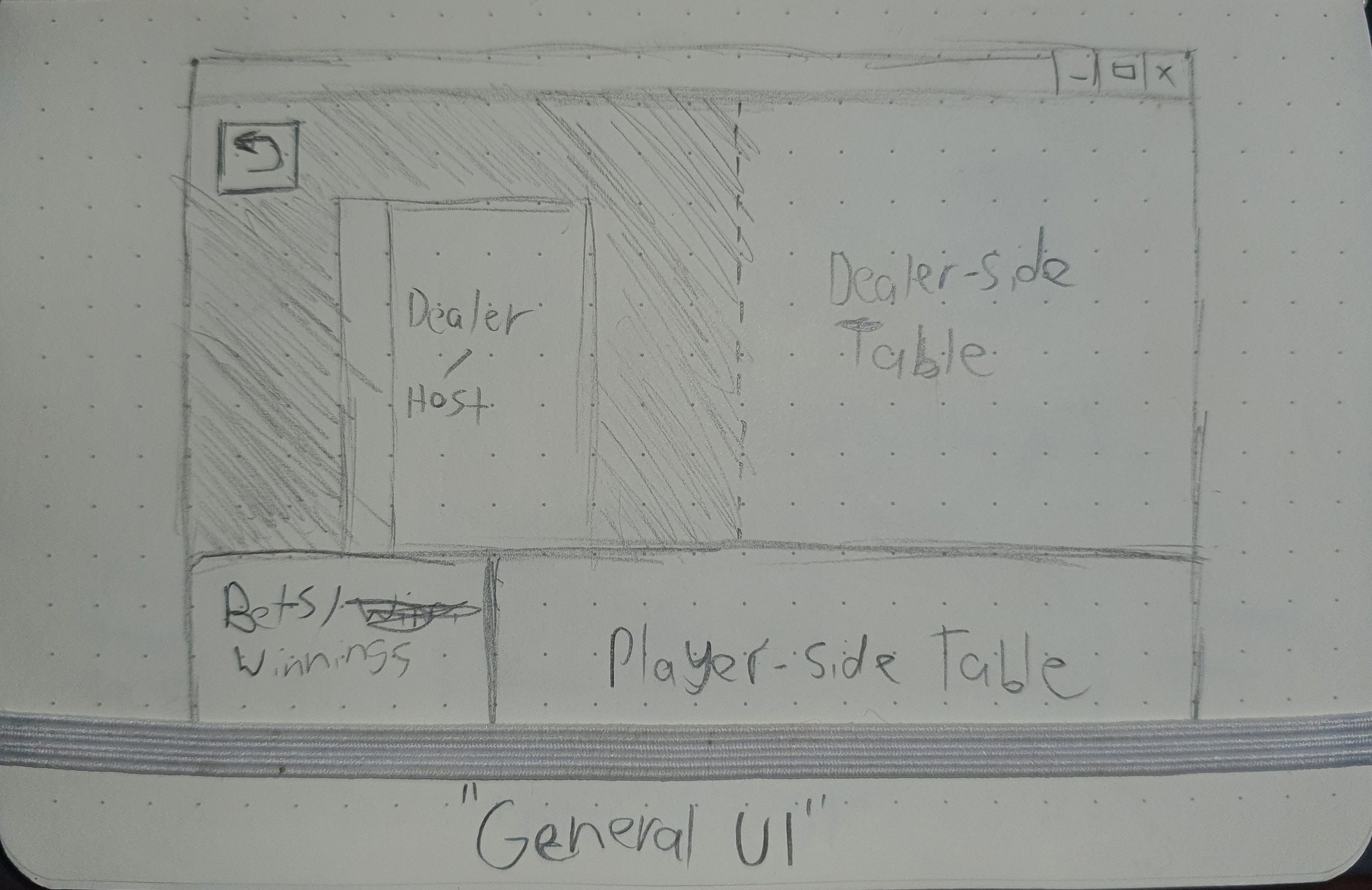
(Fig. 2 - "General UI")
Blackjack
When the Blackjack game loads, the player is presented with a prompt to select how much to bet on the game. After the player locks in an amount, the player is dealt two cards face up, while the dealer is dealt one card face up and one “hold card” (face down card). Note that the value of this card has already been generated, but is not visible to the player. After this occurs, the player is given the option to either ‘hit’, and be dealt a new card; or ‘stand’, and end their turn. The player's turn will also end when the player either reaches a value of 21 (thus automatically winning the hand) or if the player goes bust (reaches a value over 21).
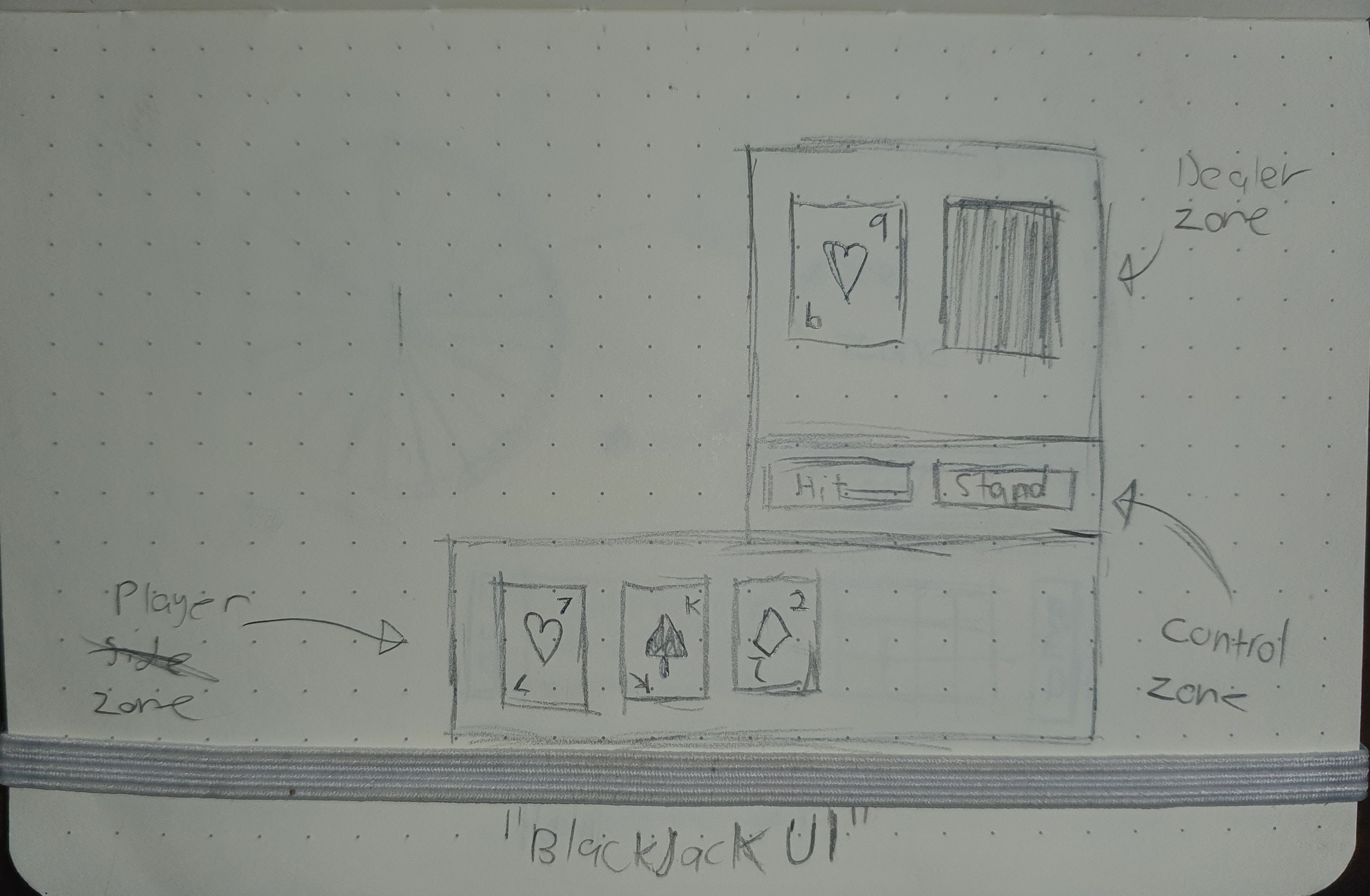
(Fig. 3 - "Blackjack UI")
After the player ends their turn, the dealer’s hold card is revealed, and the dealer then draws additional cards until a total of 17 is reached. The winner of the hand is whoever reaches a total closest to 21. The payout for winning is at a 1:1 ratio (i.e. $100 à $200).
Behind the scenes, each card is assigned an integer value between 1 and 52. When a card is drawn, a random number generator returns a value, which is then used to determine the card that is drawn. Given the nature of this form of randomness, it is impossible to count cards in this version of the game, as it uses an effectively infinite shoe.
Roulette
This game mode is a simplified version of Roulette, with only outside and single number bets available. When the player loads into the Roulette game mode, the player is presented with buttons corresponding to all available bids. After the player has locked in their bid (or multiple bids), the roulette ball is rolled. The payout depends on what kind of bet was made – outside bets are paid out 1:1, single number bets are paid out 36:1.

(Fig. 4 - “Roulette UI”)
Behind the scenes, each number on the roulette wheel is assigned a value (between 1 and 38), as well as a colour (red, black, or green). When the roulette ball is rolled, a random number is generated, and the colour assigned to that number is called. Depending on what bets the player has made, the player is paid out based on either the colour assigned to the number, or by the number rolled.
Craps
When the player loads into the craps game mode, they are prompted with buttons corresponding to the types of bets that can be made. For example, if the player chooses to play a “Pass” bet, the player is betting that the next roll will either win (7 or 11), or will roll a point number (4, 5, 6, 8, 9, 10) twice. Alternatively, if a player chooses to play a “Don't Pass”, they are betting that the next roll will lose (2, 3 or 12). Other bets are also available. After a bet is made, the player then rolls the dice. Depending on what is rolled, a number of things can happen. If a 7 or 11 is rolled, “Pass” bets win. If a 2, 3 or 12 is rolled, the player loses unless a “Don't Pass” bet was played. The payout for all these is at a 1:1 ratio, unless otherwise stated. If any other number is rolled, that number becomes the “Point” number, and the player must roll that number again before rolling a seven in order to win.

(Fig. 5 - “Craps UI”)
Behind the scenes, each side of a die is assigned a number, corresponding to that side's face value. When the player rolls, a random number generator function returns two values between one and six, with each number, as well as the sum, being stored in specific variables depending on what type of bets are in play.
Slots
The last game mode available to the player is a version of a standard slot machine. When the player loads in, the player is greeted by a standard-style slot machine. The player can then set an amount to bet, as well as the type of bet to place, with higher bets offering better odds of winning, but also costing the player more. After the player locks in their bet, the slots spin, and a payout is given based on which symbols are matching, as well as their location on the wheel.
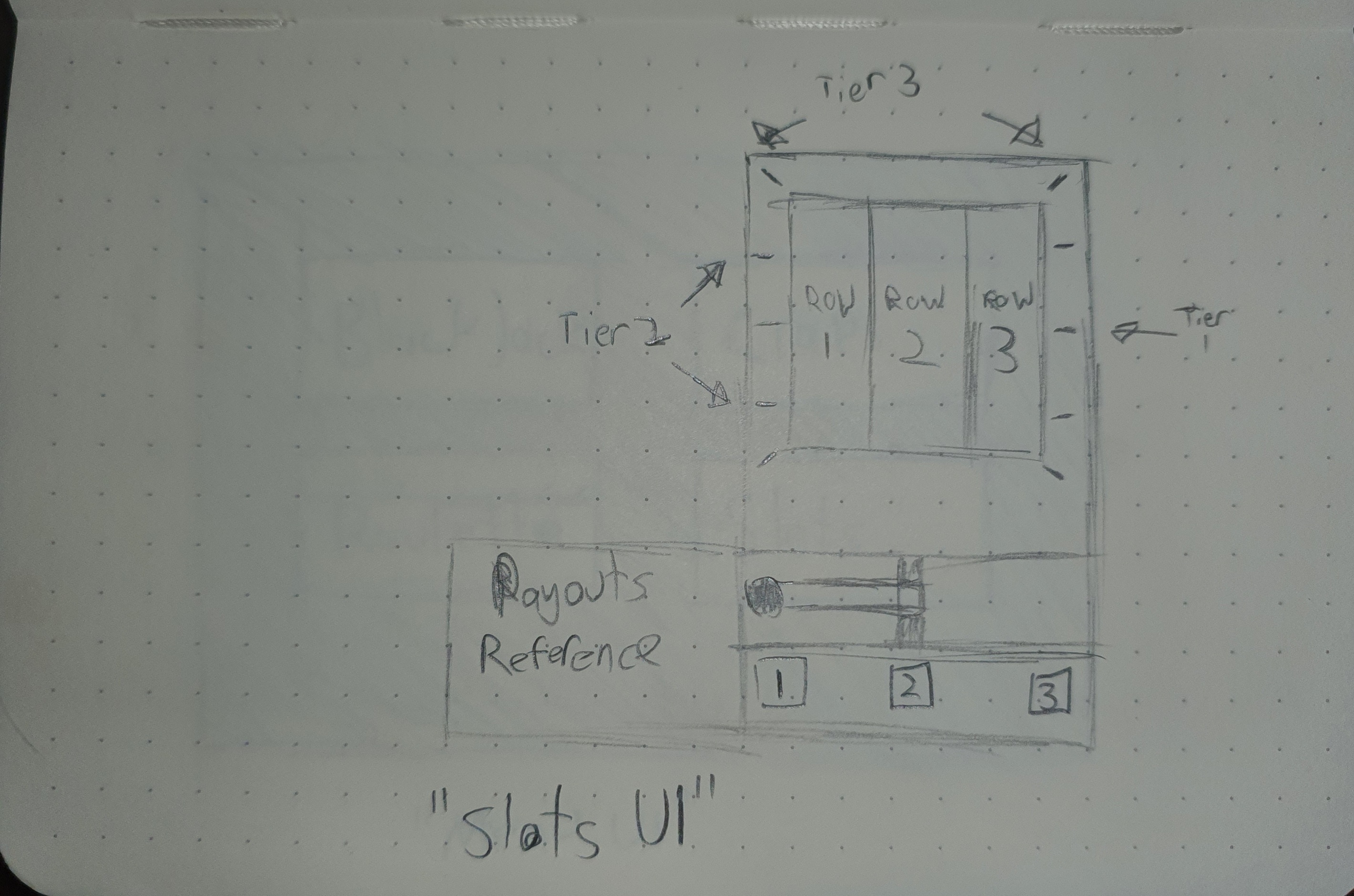
(Fig. 6 - “Slots UI”)
Behind the scenes, after the bet is locked in, three sets of three numbers are generated, with each set of three relating to each wheel of the slot machine, from left to right. Each of these numbers pertains to an individual symbol, and these symbols are stored in three separate arrays. When the payout is being determined, the numbers in each position in all three arrays are checked, and should the corresponding output match with a winning combination, the payout is credited to the player
Other
Each game will have the option to exit out and return to the game select screen. This is the equivalent of cashing out from a game, but any money currently being bet is forfeited. Each game will also have a tutorial available with information about bets, game mechanics, and payout ratios. There will also be custom artwork for the background, depicting the casino floor; as well for the dealers running each game. Some aspects of the game will be animated, such as cards being dealt and flipped, roulette wheel spinning, slots turning and dice rolling; and sound effects will be played alongside these animations.
Casino Rush
The thrills of the casino, in the palm of your hand!
| Status | In development |
| Author | Glori0usOCE |
More posts
- Devlog #6 - Final SubmissionOct 17, 2023
- Devlog #5 - Testing Session FeedbackOct 17, 2023
- Devlog #4 - Game Art and Testing SessionOct 16, 2023
- Devlog #3 - Full GameplayOct 15, 2023
- Devlog #2: Full Functionality(ish)Sep 20, 2023
- Devlog #1: Core FunctionalitySep 11, 2023
Comments
Log in with itch.io to leave a comment.
Overall this is a unique game for this unit, while the general idea of casino games in a videogame/app is fairly common (which you point out at one point).
In terms of a novel idea, I would have loved to see you lean more into the wario ware inspiration, maybe by making this be a quick-fire play through different card games, but instead of playing a full round, players need to complete the next move (getting points for quality of move, winning, or not losing etc). Despite this, if you can get this game working, it is ripe for a good assignment 3 grade.
There'll be some technical gotchas along the way possibly, and things to think about, like the fact you can't just pick random from all card types (random with replacement), but rather ensure that cards don't appear again etc (random with replacement). There might be some more difficulties with implementing the rules, and with making things effectively turn-based, but it should be a straightforward challenge, goforit!!